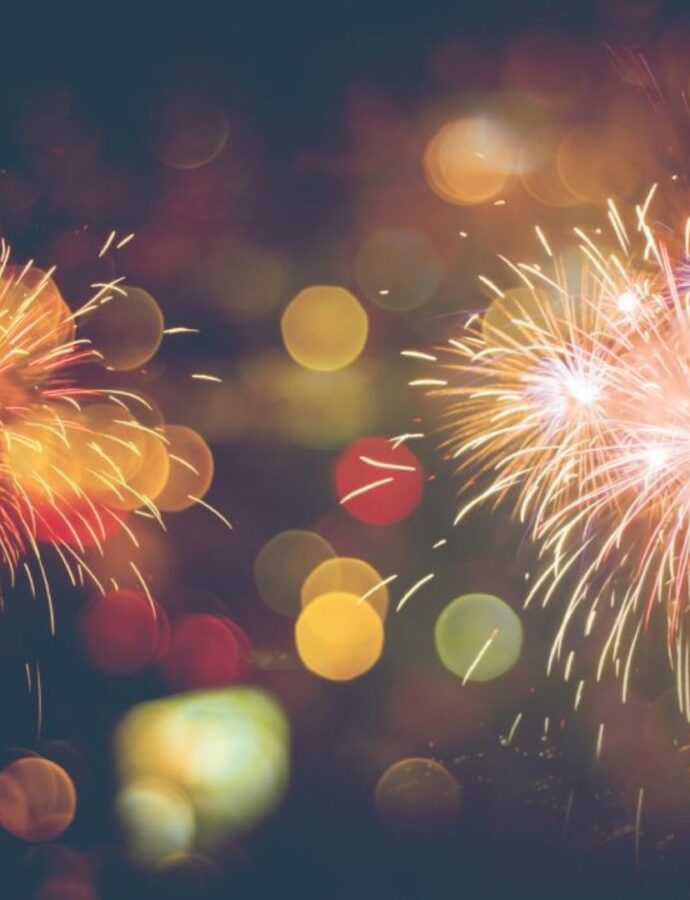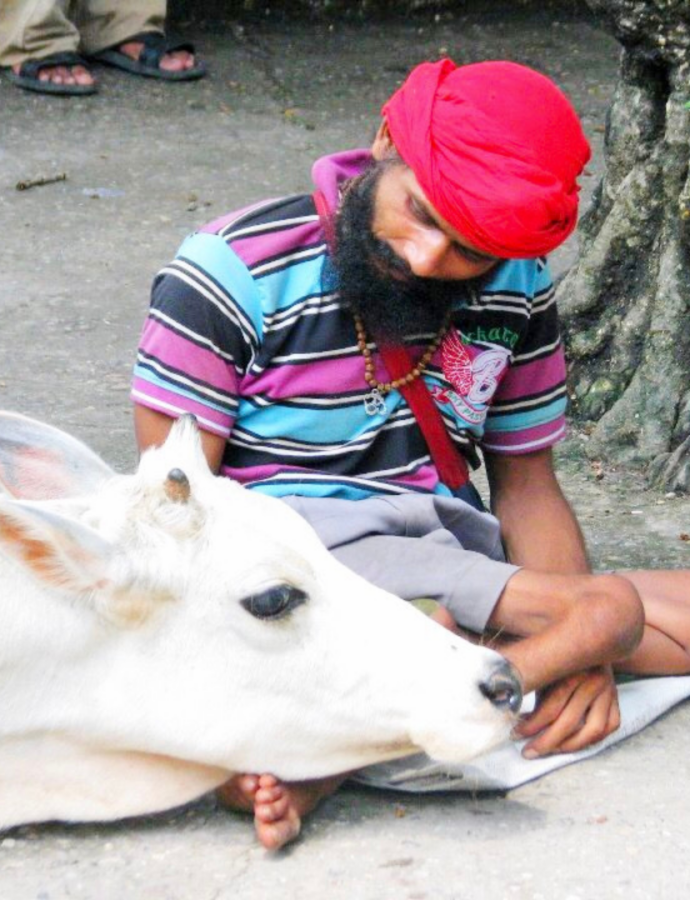
How Yoga Became a Part of My Identity
In high school and early on in college, I visited a few different therapists. They would ask me some questions. I would give them my answers. The visits would usually end with some recommendations, and then I would get into the car with my mom and tell her I wasn’t interested in ever going back. I always left feeling worse than when I arrived. There was no proof that therapy would even work. And so, I blamed these feelings on the quality of the therapist and accepted that I may always feel like crap about myself.
 Then, enter yoga. During my first year of college, I regularly attended yoga classes. The studio I went to was called “The Yoga Shack.” It was a purple building on California street that unfortunately no longer exists. I was often the youngest student in each class. The older woman who surrounded me were some of the strongest females I had ever come across. They floated through the air and seamlessly transitioned into acrobatic-like shapes while connecting their movements to a slow, controlled breath. My breath was labored, and my shaky arms felt like they would burst off at any moment when supporting my body in downward facing dog. I quickly noticed that these ladies were onto something. So I kept showing up to class even though my body struggled through most of the 75-90 minutes.
Then, enter yoga. During my first year of college, I regularly attended yoga classes. The studio I went to was called “The Yoga Shack.” It was a purple building on California street that unfortunately no longer exists. I was often the youngest student in each class. The older woman who surrounded me were some of the strongest females I had ever come across. They floated through the air and seamlessly transitioned into acrobatic-like shapes while connecting their movements to a slow, controlled breath. My breath was labored, and my shaky arms felt like they would burst off at any moment when supporting my body in downward facing dog. I quickly noticed that these ladies were onto something. So I kept showing up to class even though my body struggled through most of the 75-90 minutes.
Yoga unintentionally became my therapy. Qualities about myself that I once thought were true no longer became a part of my identity. Yoga provided me the opportunity to use my body as a means to get out of my head. The physical aspect of yoga showed me I could accomplish what was once impossible- like holding down-dog with absolute ease for an extended period. My body slowly built muscle memory, strength, and mobility so I, too, could seamlessly move into different shapes. Slowly, I developed more respect for my body, higher self-esteem, and greater confidence in my capabilities.
Unlike therapy, I stuck with yoga because my observations of long-time practitioners showed where it could lead me. These women held themselves much differently than I did. They knew something about themselves that I didn’t. Eventually, my physical practice sparked an interest in learning about the totality of the tradition.
 Consequently I have become fascinated by yogic philosophy and how these teachings can help shed some layers of myself that no longer are useful. There are parts of me I want to keep, parts of me I want to improve, and parts of me that I want to rid myself of. The physical AND philosophic practice of yoga helps me accomplish these goals.
Consequently I have become fascinated by yogic philosophy and how these teachings can help shed some layers of myself that no longer are useful. There are parts of me I want to keep, parts of me I want to improve, and parts of me that I want to rid myself of. The physical AND philosophic practice of yoga helps me accomplish these goals.
The Problem With Identity
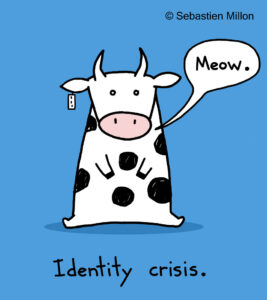 Ego limits us and causes pain when we confuse our identity and true nature (Yoga Sutra 2.6).
Ego limits us and causes pain when we confuse our identity and true nature (Yoga Sutra 2.6).
In last week’s blog post, we discussed the first Klesha, Avidya, or ignorance (click here to read more). Ignorance is defined as a lack of knowledge or information. Avidya bleeds into the remaining four kleshas. The klesha we will discuss in today’s blog post is identity. According to Patanjali, identity is the second mental affliction that can cause unnecessary suffering. Many of us are ignorant, or have a lack of understanding, of who we think we are.
A lack of knowledge about our identity leads to confusion of our true self. When we let our roles, ideas, and labels define us, we forget who we truly are. The ego, or “I-am-ness,” is when we identify with the parts of us that change. It is okay to believe aspects of who we are (wife, yoga teacher, runner, business owner, etc.). But we put ourselves at significant risk of experiencing suffering or disappointment when we become too attached to these labels, especially if circumstances take these roles away from us.
The definition of identity is “the characteristics used to determine who or what a person or thing is”. We are profoundly driven by our identity or who we think we are. Our sense of self plays a crucial role in how we think, feel, and go about our daily lives. Not only do we establish a personal identity but also a professional, marital, cultural, social, and group identity.
Our social identity helps us understand our role in society in relation to others. According to an article written by Lauren DiMaria, “If people have a positive view of their identity within a group, they are more likely to relate well to others in that group and feel positive emotions about themselves.” I used to have severe social anxiety. I had an extremely negative view of my identity within a group because of my low self-esteem. My solution was to use alcohol to feel more positive and connected in a group setting. Alcohol served its purpose at the time. But what it didn’t do was give me the skills I needed to develop my own self-worth regardless of the social setting.
DiMaria also states being a member of a group is essential for how someone regards themselves and their abilities. She suggests you can feel more confident, satisfied, and respected by gaining more status in a group. This all sounds fine, except self-worth becomes dependent on the validation of others and your social status within a group. I spent a lot of time worrying about if others accepted me as a part of their group. My concern about how they regarded me caused me to act according to who I thought they wanted me to be rather than who I was. Trying to fit into a group further confused my idea of identity and left me feeling disconnected from myself.
So Who In The Heck Are You?
 My friend Hannah introduced me to the Art of Living Foundation when I was in college. The Foundation offers various courses as a means to help others live life to its fullest. I did my first Part 1 course alongside other university students during my freshman year. One of the exercises they had us do was pair up and ask each other, “Who are you?” The asker was to keep asking while the answerer had to keep answering until the teacher signaled us to stop. It started out easy enough.
My friend Hannah introduced me to the Art of Living Foundation when I was in college. The Foundation offers various courses as a means to help others live life to its fullest. I did my first Part 1 course alongside other university students during my freshman year. One of the exercises they had us do was pair up and ask each other, “Who are you?” The asker was to keep asking while the answerer had to keep answering until the teacher signaled us to stop. It started out easy enough.
Who are you? Kristin Wetzel
Who are you? I am a college student studying journalism.
Who are you? I am an 18-year old female.
Who are you? I am a sister and daughter.
Who are you? I was born on February 5th in Reno, Nevada. I grew up in Dayton, Nevada. I played softball and volleyball in high school. I am around 5-feet tall. I love to ski and the outdoors. Dogs are my favorite animal. I wouldn’t say I like math.
Answering this question became increasingly more difficult with each passing second. The point of the exercise was to help us identify the various ways we defined who we were. Our identities mainly consisted of labels, likes/dislikes, and experiences. So who exactly was I? My parents didn’t name me for two whole days after I was born. Who was I before then? I wasn’t always 18-years old, and I existed before the day I was born. There was a time I didn’t attend college, know what a dog was, ski, play sports, or had a distaste for math. Who was I before all of this?
We Are Pure Consciousness
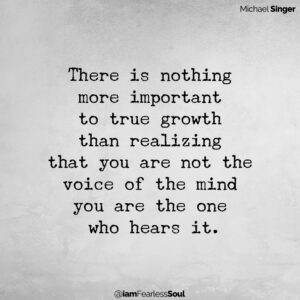 Michael Singer, the author of the book The Untethered Soul, addresses this very question in a chapter titled “Who Are You?” Singer states we are not the objects we look at in the outside world. Instead, we are the one inside looking out at the world. We are also not our thoughts or emotions; instead, these inner and outer objects compete for our attention. Who we are is having both inner and outer experiences, but we are not these experiences. Thoughts, emotions, and the external world come and go. But who we are remains the same. We are the same looker who sees ourselves in the mirror at 18-years of age as the one who sees our reflection at 32-years of age. We are the subject, and our thoughts, emotions, and experiences are the objects we observe.
Michael Singer, the author of the book The Untethered Soul, addresses this very question in a chapter titled “Who Are You?” Singer states we are not the objects we look at in the outside world. Instead, we are the one inside looking out at the world. We are also not our thoughts or emotions; instead, these inner and outer objects compete for our attention. Who we are is having both inner and outer experiences, but we are not these experiences. Thoughts, emotions, and the external world come and go. But who we are remains the same. We are the same looker who sees ourselves in the mirror at 18-years of age as the one who sees our reflection at 32-years of age. We are the subject, and our thoughts, emotions, and experiences are the objects we observe.
When we strip everything away, what remains is pure awareness or consciousness. But what is awareness? Singer presents the idea of sitting in a room filled with people and various objects. Our consciousness, or awareness, would still exist if this room suddenly became dark and empty. Our thoughts could even cease to exist as they do in deep meditation, yet our awareness would remain. However, if our awareness didn’t exist, we would no longer have a sense of being. Without consciousness, there is nothing. Therefore, who we are when everything else is removed is pure consciousness.
The final answer to the question ‘who am I?’ then becomes, “I am the one who sees. From back in here somewhere, I look out, and I am aware of the events, thoughts, and emotions that pass before me.” We sit in the seat of consciousness behind all of the internal and external stimuli we experience during our daily lives. This place is the innermost essence of each individual, known as the Atman or the soul. And this is who we all are.
You Are What You Think You Are
While it would be nice to go about your day believing you are a glowing ball of eternal blissful consciousness, this, unfortunately, is not how most of us live. And while you are this, you are also a human having a human experience. Part of that experience involves choosing your identity or who you wish to be during your time here on earth. Below are four ways you can help to develop your identity:
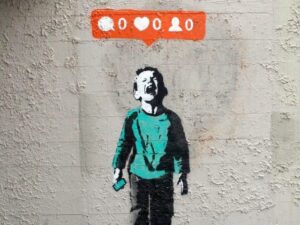 Identify which external things you wish to value: Identity is the collection of thoughts you have about yourself and your life. It determines who we are in the world. Whether consciously or unconsciously, we all choose what we wish to value. Many of the values in western society include: being professionally successful, education, wealth, family, religion, physical beauty, and being socially accepted. Our values serve as a way for us to receive validation from what we deem to be important. For example, if I value social relationships, then I would feel validated every time someone accepts me as a part of their group.
Identify which external things you wish to value: Identity is the collection of thoughts you have about yourself and your life. It determines who we are in the world. Whether consciously or unconsciously, we all choose what we wish to value. Many of the values in western society include: being professionally successful, education, wealth, family, religion, physical beauty, and being socially accepted. Our values serve as a way for us to receive validation from what we deem to be important. For example, if I value social relationships, then I would feel validated every time someone accepts me as a part of their group. Identify which internal things you wish to value: We get to decide what qualities we wish to be a part of our identity and then work to develop them. You can imagine qualities that will make you stronger, better capable, and more of who you are, regardless of your circumstances. For example, if being kind is a part of your identity, you can exemplify this quality even when someone is unkind to you.
Identify which internal things you wish to value: We get to decide what qualities we wish to be a part of our identity and then work to develop them. You can imagine qualities that will make you stronger, better capable, and more of who you are, regardless of your circumstances. For example, if being kind is a part of your identity, you can exemplify this quality even when someone is unkind to you.  Identify What You Really Care About: Often times we can invest so much of ourselves in one area that we tend to loose sight of what is really important. For example, the world of social media started to confuse my ideals of yoga. I started to care about practicing yoga as a way to mirror the images I observed on social media, which by the way was utterly impossible. One day I had to sit down and really questioned why I even cared about yoga in the first place. Turns out, my answer had nothing to do with achieving the physique of an acrobatic model. Instead, I cared about the teachings of yoga that fostered the development of internal strength. I continue to question what I really care about whenever I feel I begin to loose sight of what’s important in my relationships, professional career, and life.
Identify What You Really Care About: Often times we can invest so much of ourselves in one area that we tend to loose sight of what is really important. For example, the world of social media started to confuse my ideals of yoga. I started to care about practicing yoga as a way to mirror the images I observed on social media, which by the way was utterly impossible. One day I had to sit down and really questioned why I even cared about yoga in the first place. Turns out, my answer had nothing to do with achieving the physique of an acrobatic model. Instead, I cared about the teachings of yoga that fostered the development of internal strength. I continue to question what I really care about whenever I feel I begin to loose sight of what’s important in my relationships, professional career, and life. 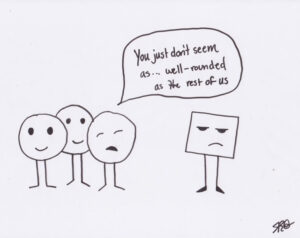 Diversify Your Identity: Blogger, Tim Ferris, spoke about the idea of Identity Diversification. He stated: When you have money, it’s always smart to diversify your investments. That way if one of them goes south, you don’t lose everything. It’s also smart to diversify your identity, to invest your self-esteem and what you care about into a variety of different areas — business, social life, relationships, philanthropy, athletics — so that when one goes south, you’re not completely screwed over and emotionally wrecked. In other words, you compromise your self-esteem and idea of self-worth when you invest your identity in one area. For example, I would greatly suffer if my whole identity was centered around being a professional NFL player, but then one day could no longer play professional football.
Diversify Your Identity: Blogger, Tim Ferris, spoke about the idea of Identity Diversification. He stated: When you have money, it’s always smart to diversify your investments. That way if one of them goes south, you don’t lose everything. It’s also smart to diversify your identity, to invest your self-esteem and what you care about into a variety of different areas — business, social life, relationships, philanthropy, athletics — so that when one goes south, you’re not completely screwed over and emotionally wrecked. In other words, you compromise your self-esteem and idea of self-worth when you invest your identity in one area. For example, I would greatly suffer if my whole identity was centered around being a professional NFL player, but then one day could no longer play professional football.
Time to Sum It Up
 The world is and always will be uncertain. We can be certain about who we decide to be no matter what happens outside of us. Keep in mind our identity is not determined by anything external. At the end of the day, we are not defined by our career, how much money we make, or what people say about us. Circumstances also do not determine our identity. If we lose sight of who we are, there is no need to look to someone or something else to make us feel better. Instead, we can simply close our eyes, get quiet, and access that inner part of ourselves that is already whole, blissful, and complete. After all, this is who we all are when we peel back the layers of identity.
The world is and always will be uncertain. We can be certain about who we decide to be no matter what happens outside of us. Keep in mind our identity is not determined by anything external. At the end of the day, we are not defined by our career, how much money we make, or what people say about us. Circumstances also do not determine our identity. If we lose sight of who we are, there is no need to look to someone or something else to make us feel better. Instead, we can simply close our eyes, get quiet, and access that inner part of ourselves that is already whole, blissful, and complete. After all, this is who we all are when we peel back the layers of identity.
Next week’s blog post will cover the topic of the third & fourth klesha- attachment & avoidance. For now, feel free to contemplate aspects of your identity by answering the below questions.
Contemplation Points
- What do you know to be true about you no matter what?
- What do you REALLY care about?
- Who are you today that is different than who you were 10-years ago? What parts of you have remained the same?
- What type of person do you wish to be? How can you start being that person now?
- Singer states we get to create a “house” (i.e. identity) based on what we believe and how we react to what we have experienced in life. What is the foundation of your house? Why? How can you change it if you don’t like it?
Recommendations
I highly recommend reading the book, The Untethered Soul. It is one of my AND Oprah’s favorite books.

